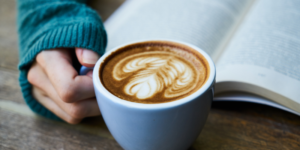Introduction
Coffee tasting, also known as cupping, is a delightful and immersive experience that allows coffee enthusiasts to explore the intricate flavors and aromas of their favorite beverage. While cupping is often associated with professional coffee cuppers, it’s an activity that can be enjoyed by anyone in the comfort of their own home. In this article, we will guide you through the process of creating a high-quality coffee tasting experience at home, from selecting the right beans to setting up a sensory station and evaluating the flavors.
Selecting the Beans
The first step in creating a memorable coffee tasting experience at home is selecting the right beans. Opt for freshly roasted whole beans from reputable coffee roasters or specialty coffee shops. Consider exploring different origins, such as single-origin beans or blends, to experience a variety of flavor profiles. Look for beans that are within your preferred roast level and grind them just before the cupping session to preserve their freshness.
Setting Up the Sensory Station
Create a dedicated space for your coffee tasting session. Ensure the area is clean, well-lit, and free from strong odors that could interfere with the aroma of the coffee. Gather the necessary equipment, including cupping bowls or cups, cupping spoons, a grinder, a timer, and water at the appropriate temperature (around 200°F or 93°C). Arrange the cups or bowls in a systematic manner, labeling each one to keep track of the different coffees being tasted.
Grinding and Brewing
Grind the coffee beans just before the cupping session to preserve the aroma and flavor. Use a burr grinder set to a medium-coarse grind size. Measure the coffee and water ratios according to the cupping standards, typically using a ratio of 1:16 (1 part coffee to 16 parts water). Pour the hot water over the grounds, ensuring all the coffee is fully saturated. Allow the coffee to steep for a few minutes before breaking the crust and removing any floating grounds.
Evaluating the Aromas
A crucial aspect of coffee cupping is evaluating the aromas. Take a moment to inhale the fragrant aromas rising from the cups or bowls. Close your eyes and breathe in deeply, allowing the aromas to envelop your senses. Take note of the different scents you perceive, such as floral, fruity, nutty, or chocolatey notes. Jot down your observations to reference later.
Tasting and Assessing the Flavors
Now comes the exciting part—tasting the coffee. Use a cupping spoon to slurp the coffee from the spoon, ensuring it coats your entire palate. Take your time to explore the different flavors present in the coffee. Pay attention to the sweetness, acidity, body, and overall balance. Consider the intensity of the flavors and how they evolve from the initial sip to the lingering aftertaste. Make notes of the specific flavor characteristics and any notable aspects of each coffee.
Comparing and Contrasting
If you’re tasting multiple coffees, take the opportunity to compare and contrast their flavors. Consider the differences in acidity, sweetness, and body. Note any similarities or distinct characteristics that stand out. This comparative approach allows you to appreciate the unique qualities of each coffee and develop a deeper understanding of your preferences.
Reflecting and Documenting
After tasting the coffees, take a moment to reflect on the experience. Consider the flavors, aromas, and overall impression of each coffee. Document your observations and thoughts in a coffee tasting journal or notebook. This record will serve as a valuable reference for future tastings and help you track your coffee preferences and discoveries.
Conclusion
Creating a high-quality coffee tasting experience at home is an enriching and rewarding journey. By selecting the right beans, setting up a sensory station, and following the cupping process, you can delve into the captivating world of coffee flavors and aromas. Through careful evaluation and documentation, you’ll develop a refined palate and a deeper appreciation for the nuances of coffee.
So, set aside some time, gather your favorite beans, and embark on your own coffee tasting adventure. With each cup, you’ll discover new depths of flavor, unravel the complexities of different origins and roasts, and cultivate a true connoisseurship of coffee. Enjoy the process, savor the flavors, and let the world of coffee tasting unfold in the comfort of your own home. Cheers!
In conclusion, embarking on a coffee tasting journey at home is a delightful and enlightening experience. By following the steps outlined in this guide, you can create a sensory adventure that explores the flavors, aromas, and nuances of coffee. From carefully selecting high-quality beans to setting up a dedicated tasting station and evaluating the sensory aspects of each cup, you can enhance your understanding and appreciation of coffee.
Through the process of grinding, brewing, and tasting, you have the opportunity to develop a discerning palate and discover your personal preferences in terms of acidity, sweetness, body, and overall balance. Comparing and contrasting different coffees allows you to unravel their distinct characteristics and gain a deeper understanding of the vast array of flavors coffee has to offer.
Remember to take your time during the tasting process, allowing each sip to unfold on your palate and paying attention to the evolving flavors and aftertastes. And don’t forget to document your observations and reflections in a coffee tasting journal, as this will serve as a valuable resource for future tastings and the exploration of new coffees.
Whether you are a coffee enthusiast or a budding connoisseur, conducting coffee tastings at home offers a unique opportunity to connect with the artistry and craftsmanship behind this beloved beverage. So, gather your favorite beans, set up your sensory station, and let your senses guide you on a journey of discovery through the world of coffee flavors. Cheers to indulging in the pleasures of coffee tasting in the comfort of your own home!



